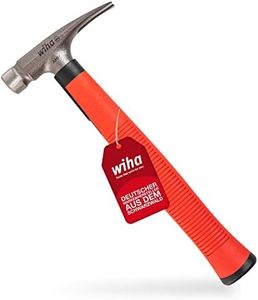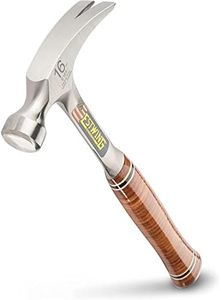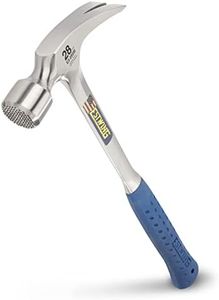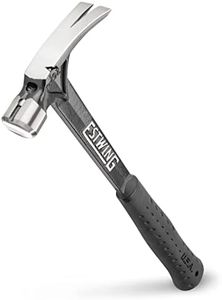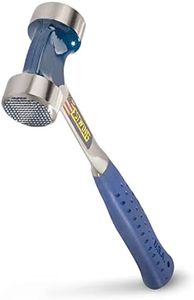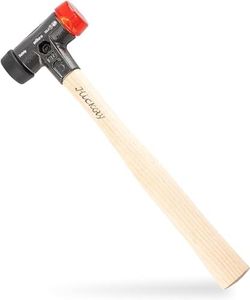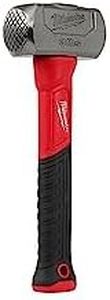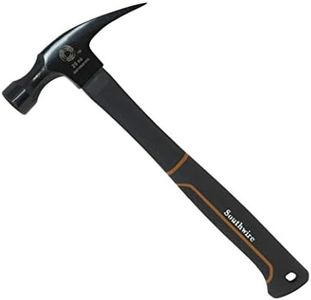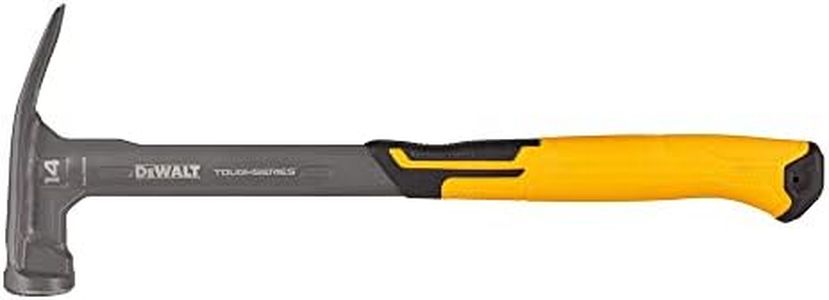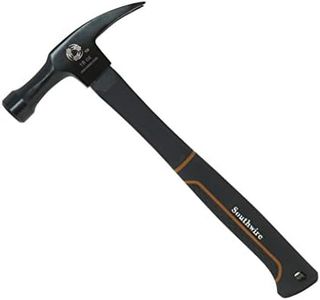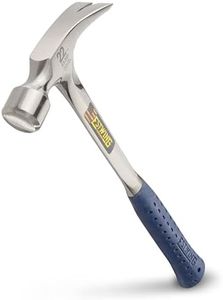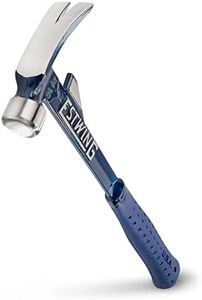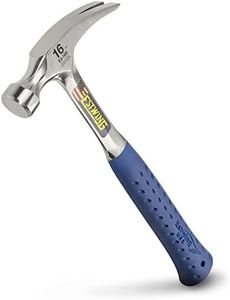We Use CookiesWe use cookies to enhance the security, performance,
functionality and for analytical and promotional activities. By continuing to browse this site you
are agreeing to our privacy policy
10 Best Electrician Hammers
From leading brands and best sellers available on the web.By clicking on a link to a third party's website, log data is shared with that third party.
Buying Guide for the Best Electrician Hammers
Choosing the right electrician's hammer is important to make electrical work easier, safer, and more comfortable. Since electricians do a lot of work in tight spaces, often overhead or on delicate surfaces, the hammer needs to be specialized for the job. Understanding the key features and how they relate to your needs will help you pick a tool that feels right in your hand, performs reliably, and lasts a long time.WeightThe weight of an electrician's hammer affects how powerful each strike is and how easy the tool is to handle. Lighter hammers (typically 8-12 ounces) are easier to control and better for overhead work or in confined areas, which is common in electrical work. Heavier hammers (over 16 ounces) deliver more force but can be tiring to use for extended periods, especially in awkward positions. For most electricians, a lighter hammer is preferable unless you know you will need the extra driving force for tasks like heavy-duty anchoring or demolition.
Handle materialHammer handles can be made from wood, fiberglass, or steel, each offering different benefits. Wood handles absorb shock well and feel comfortable, but can break over time. Fiberglass handles are durable, resist weather and chemicals, and absorb some shock. Steel handles are the strongest but also transfer more vibration to your hand, which can cause fatigue. For electricians, fiberglass is often a great compromise between strength and comfort, especially when working with your tools all day.
Head designElectrician's hammers often have a straight claw or a slimmer head to help with prying boards or pulling nails in tight spaces. The shape of the head determines how easily you can work around obstacles like electrical boxes or conduits. A slim, straight-claw head is ideal for reaching into narrow spots, while a wider or curved claw gives you more leverage for pulling. Think about where you'll be working most—a more compact head is best for crowded panels and small enclosures.
InsulationSome electrician hammers offer insulated handles to help protect against electrical shock. This feature is especially important if you sometimes work on live circuits or in unpredictable environments. Insulation ratings (measured in volts) show how much protection the grip can offer, but remember, no hand tool guarantees full protection against electric shock. Still, if safety is a concern in your work, choosing a hammer with a certified insulated handle adds another layer of protection.
Grip designThe grip of your hammer determines how comfortable and secure it feels in your hand. Look for non-slip materials or ergonomic shapes that reduce hand fatigue and prevent slips, especially if you work long hours or in environments where your hands may get sweaty or dirty. A comfortable, contoured grip helps prevent blisters and allows for better control, which is important for careful, repeated hammering around sensitive electrical parts.
LengthThe length of the hammer affects your reach and leverage. Shorter hammers (10-12 inches) are easier to use in tight spaces, making them ideal for most electrical work. Longer handles can generate more striking force but may be harder to control or fit in compact environments. If most of your work is in junction boxes, control panels, or crawl spaces, a shorter handle will likely suit your needs best.

